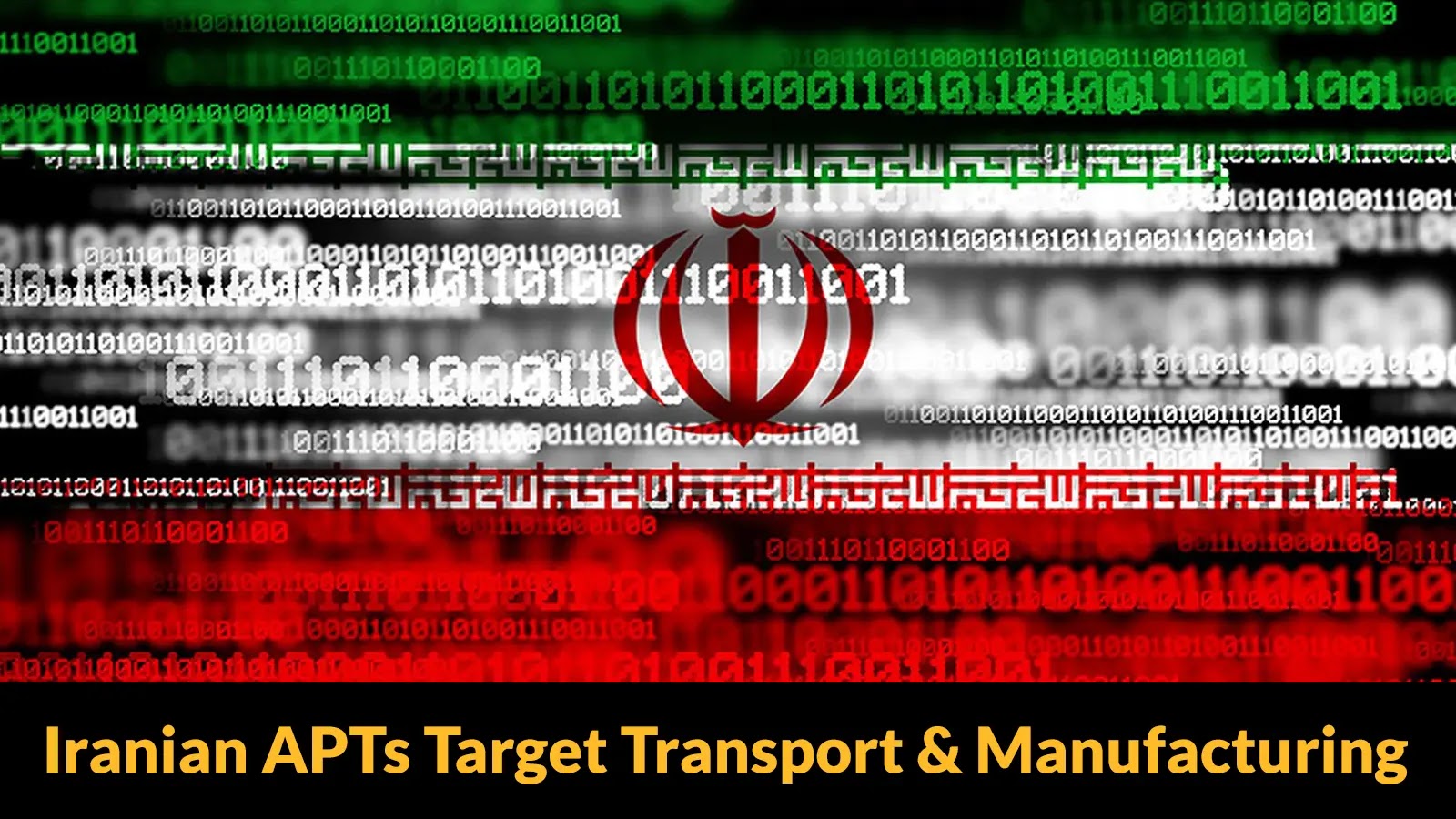
Iranian APTs Hackers Actively Attacking Transportation and Manufacturing Sectors
Iranian APTs Intensify Cyber Warfare Against US Critical Infrastructure
The digital battleground is expanding, and state-sponsored threat actors are increasingly targeting the very backbone of modern nations: critical infrastructure. Recent intelligence highlights a disturbing escalation in cyberattacks by Iranian Advanced Persistent Threats (APTs) against US transportation and manufacturing sectors, coinciding with heightened geopolitical tensions. This isn’t merely a statistic; it’s a stark warning for security professionals across these vital industries.
Understanding the motivations and methods behind these coordinated campaigns is paramount for developing robust defense strategies. This analysis delves into the recent surge in Iranian APT activity, dissects their preferred targets, and outlines proactive measures organizations must implement to fortify their cyber posture.
An Unprecedented Surge in Malicious Activity
Cybersecurity researchers have detected a dramatic 133% increase in malicious activity attributed to Iranian state-sponsored threat actors during May and June 2025. This significant escalation points to a deliberate and concerted effort to disrupt, destabilize, and potentially exfiltrate sensitive data from critical US infrastructure. Such a sharp rise in a short timeframe is not coincidental; it directly correlates with the ongoing geopolitical landscape, suggesting these cyber operations are extensions of statecraft.
The intensity and coordination of these attacks underscore the evolving nature of cyber warfare, where digital incursions serve strategic objectives beyond mere financial gain or intellectual property theft. For organizations in the crosshairs, this means a sustained and sophisticated threat that demands a higher level of vigilance and preparedness.
Targeted Sectors: Transportation and Manufacturing Under Siege
The focus of these Iranian APT campaigns is notably precise: the transportation and manufacturing sectors. These industries are highly interconnected, reliant on complex supply chains, and increasingly digitized, making them attractive targets for adversaries seeking to inflict widespread disruption.
- Transportation: This sector includes everything from aviation and maritime logistics to railways and freight. Disruptions here can have cascading effects, impacting supply chains, economic stability, and national security. Attacks could range from compromising operational technology (OT) systems that control critical infrastructure to exfiltrating sensitive logistical data.
- Manufacturing: Advanced manufacturing processes, industrial control systems (ICS), and intellectual property form the core of this sector. Sabotaging production lines, stealing proprietary designs, or manipulating output are all potential outcomes of successful attacks, leading to significant economic damage and competitive disadvantage.
The choice of these sectors suggests objectives related to economic disruption, intelligence gathering, and potentially laying groundwork for future kinetic or economic leverage. Organizations within these sectors must recognize their heightened risk profile and tailor their cybersecurity strategies accordingly.
Common Attack Vectors and Tactics
While specific CVEs for this particular campaign have not been publicly detailed in the provided source, Iranian APTs historically leverage a range of sophisticated tactics, techniques, and procedures (TTPs). These often include:
- Phishing and Spear-Phishing: Highly targeted campaigns designed to trick employees into divulging credentials or installing malware. These often use tailored lures relevant to the industry or individual.
- Supply Chain Attacks: Compromising a less secure vendor or partner in the supply chain to gain access to the primary target. This is particularly effective against complex, interconnected sectors like manufacturing.
- Exploitation of Public-Facing Vulnerabilities: Leveraging known vulnerabilities in internet-facing applications, VPNs, or network devices. Examples might include exploits for vulnerabilities like CVE-2023-XXXXX affecting widely deployed network appliances, or CVE-2024-YYYYY in popular industrial software, though specific CVEs related to this campaign remain undisclosed. Such vulnerabilities, if unpatched, serve as direct entry points for sophisticated adversaries.
- Remote Desktop Protocol (RDP) Brute-Forcing: Attempting to gain access to systems through weak or default RDP credentials.
- Living Off The Land (LOTL) Techniques: Utilizing legitimate system tools and processes to move laterally within a network and evade detection, making their activities harder to distinguish from legitimate user behavior.
Remediation Actions and Proactive Defenses
Given the elevated threat, organizations in the transportation and manufacturing sectors must take immediate and decisive action to strengthen their defenses. A multi-layered approach is essential, combining technical controls with robust security awareness training.
- Patch Management and Vulnerability Scanning: Implement a rigorous patch management program, prioritizing critical security updates for all operating systems, applications, and network devices. Regularly conduct external and internal vulnerability scans to identify and remediate exploitable flaws. Pay close attention to public-facing assets.
- Endpoint Detection and Response (EDR) & Extended Detection and Response (XDR): Deploy EDR/XDR solutions across all endpoints to detect and respond to suspicious activities in real-time, even those using fileless techniques.
- Network Segmentation: Isolate critical operational technology (OT) and industrial control systems (ICS) networks from the broader IT network. Implement strict access controls between segments to limit lateral movement.
- Multi-Factor Authentication (MFA): Enforce MFA for all remote access, privileged accounts, and critical systems. This is the single most effective control against credential theft.
- Security Awareness Training: Continuously educate employees on phishing, social engineering tactics, and the importance of reporting suspicious emails or activities. Phishing remains a primary initial access vector.
- Incident Response Plan (IRP): Develop, test, and regularly update a comprehensive incident response plan. Ensure all key stakeholders understand their roles and responsibilities during a cyber incident. Practice tabletop exercises to improve response readiness.
- Threat Intelligence Integration: Subscribe to and integrate relevant threat intelligence feeds to stay informed about emerging TTPs, indicators of compromise (IOCs), and vulnerabilities being exploited by Iranian APTs.
Conclusion
The recent surge in targeted attacks by Iranian APTs against US transportation and manufacturing sectors underscores a critical shift in the cyber threat landscape. These are not opportunistic attacks but rather strategically driven campaigns with potentially grave implications for national security and economic stability. Organizations in these high-risk sectors must move beyond basic cybersecurity hygiene and adopt a proactive, intelligence-driven defense posture. By understanding the adversary, strengthening fundamental defenses, and preparing for the inevitable, critical infrastructure operators can significantly reduce their attack surface and build resilience against sophisticated state-sponsored threats.





